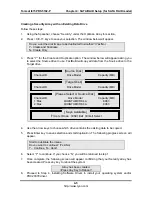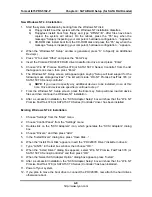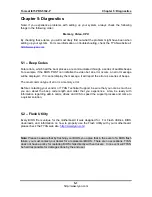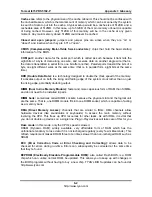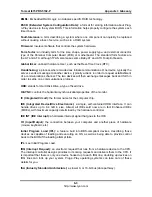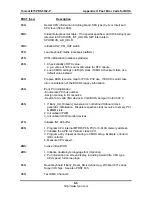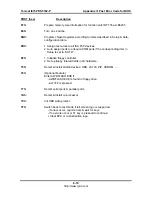
Tomcat i875PR S5102-P
Appendix I: Glossary
EMRL:
Embedded RAID Logic. An Adaptec specific RAID technology.
ESCD (Extended System Configuration Data):
a format for storing information about Plug-
n-Play devices in the system BIOS. This information helps properly configure the system each
time it boots.
Fault-tolerance:
a term describing a system where one component can quickly be replaced
without causing a loss of service, such as in a RAID system.
Firmware:
low-level software that controls the system hardware.
Form factor:
an industry term for the size, shape, power supply type, and external connector
type of the Personal Computer Board (PCB) or motherboard. The standard form factors are
the AT and ATX, although TYAN also makes some Baby-AT and ATX Footprint boards.
Global timer:
onboard hardware timer, such as the Real-Time Clock (RTC).
Handshaking:
a process where two devices initiate communications. One device, typically the
server, sends a message to another device, typically a client, in order to request establishment
of a communications channel. The two devices will then exchange messages back and forth in
order to settle on a communications protocol.
HDD:
stands for Hard Disk Drive, a type of fixed drive.
H-SYNC:
controls the horizontal synchronization/properties of the monitor.
IC (Integrated Circuit):
the formal name for the computer chip.
IDE (Integrated Device/Drive Electronics):
a simple, self-contained HDD interface. It can
handle drives up to 8.4 GB in size. Almost all IDEs sold now are in fact Enhanced IDEs
(EIDEs), with maximum capacity determined by the hardware controller.
IDE INT (IDE Interrupt):
a hardware interrupt signal that goes to the IDE.
I
/O (Input/Output):
the connection between your computer and another piece of hardware
(mouse, keyboard, etc.)
Initial Program Load (IPL):
a feature built into BBS-compliant devices, describing those
devices as capable of loading and executing an OS, as well as being able to provide control
back to the BIOS if the loading attempt fails.
IPL:
see Initial Program Load.
IRQ (Interrupt Request):
an electronic request that runs from a hardware device to the CPU.
The interrupt controller assigns priorities to incoming requests and delivers them to the CPU. It
is important that there is only one device hooked up to each IRQ line; doubling up devices on
IRQ lines can lock up your system. Plug-n-Play operating systems can take care of these
details for you.
ISA (Industry Standard Architecture):
a slower 8- or 16-bit bus (data pathway).
6-3
http://www.tyan.com

